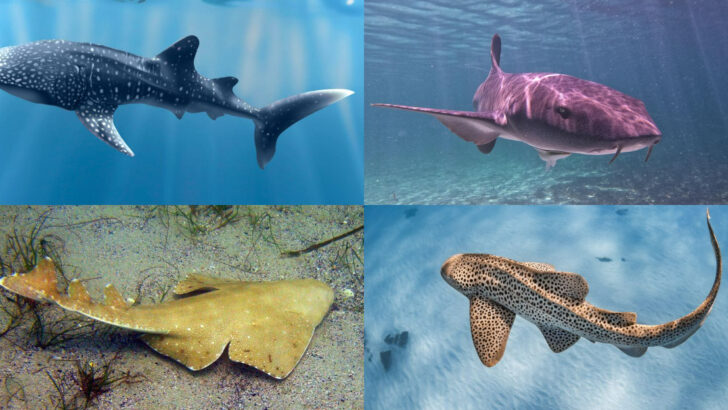Sharks are often painted as ruthless, terrifying predators of the deep. But what if we told you that not all sharks are the bloodthirsty monsters they’re made out to be?
In fact, many shark species are surprisingly gentle, peaceful giants of the ocean. These graceful creatures glide through the waters, minding their own business, and rarely pose any threat to humans.
From the massive whale shark to the curious nurse shark, these sea dwellers are full of surprises. They might not have the killer instincts we expect, but they’re still awe-inspiring in their own right.
Ready to meet the sharks that will completely change the way you think about them? Let’s dive in!
Whale Shark
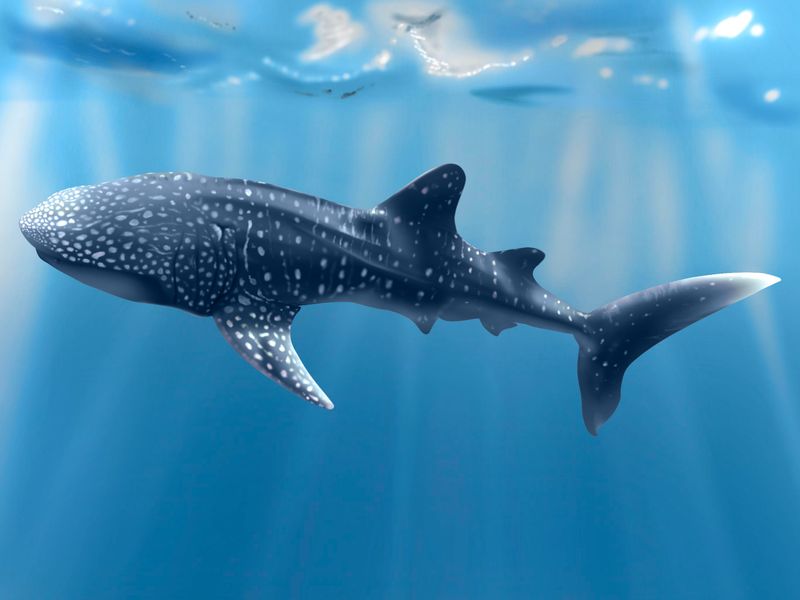
Despite their intimidating size, these ocean giants are filter feeders. They swim gracefully through tropical waters, filtering plankton and small fish with their wide mouths.
They often attract snorkelers and divers eager to swim alongside them. In the wild, whale sharks are curious but non-aggressive.
Their slow-moving nature and gentle demeanor make them a favorite among marine enthusiasts. Observing a whale shark in its natural habitat is both awe-inspiring and serene.
Their presence is a testament to the ocean’s gentle giants, offering a stark contrast to the fearsome image sharks often have.
Basking Shark
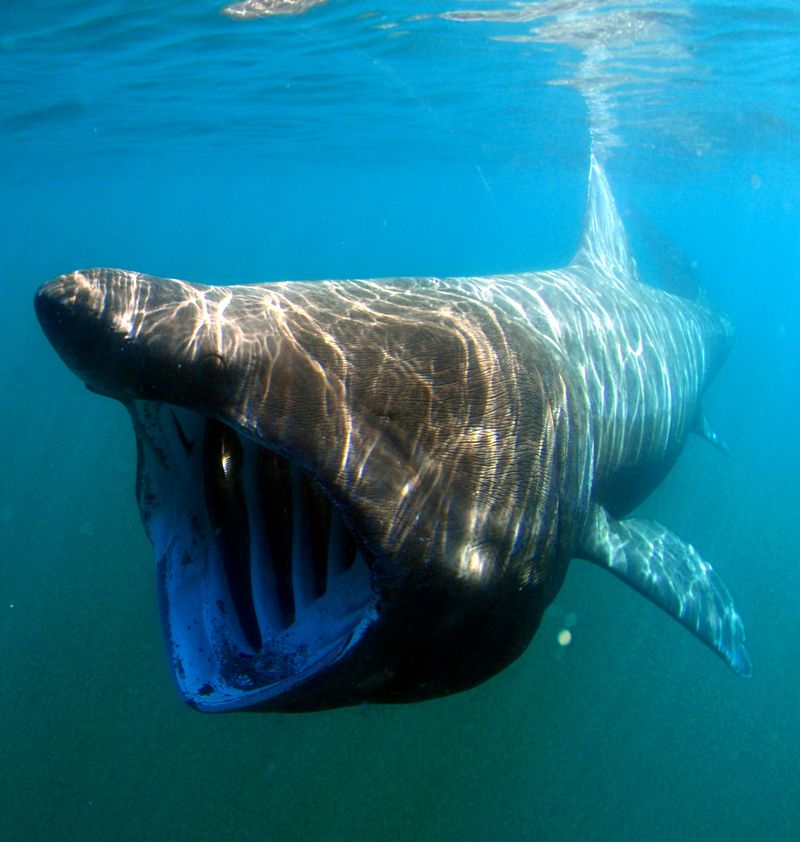
Known for its massive mouth, the basking shark is another gentle filter feeder. It glides near the surface, with its mouth agape, filtering out water to catch plankton.
Despite its daunting appearance, it poses no threat to humans. Basking sharks are often seen slowly cruising in groups.
They exude a calmness that captivates those lucky enough to encounter them. Their interactions with humans are rare but enchanting.
Basking sharks embody the gentle side of marine life, showcasing an unexpected grace in their movements. They leave a lasting impression with their peaceful demeanor.
Nurse Shark
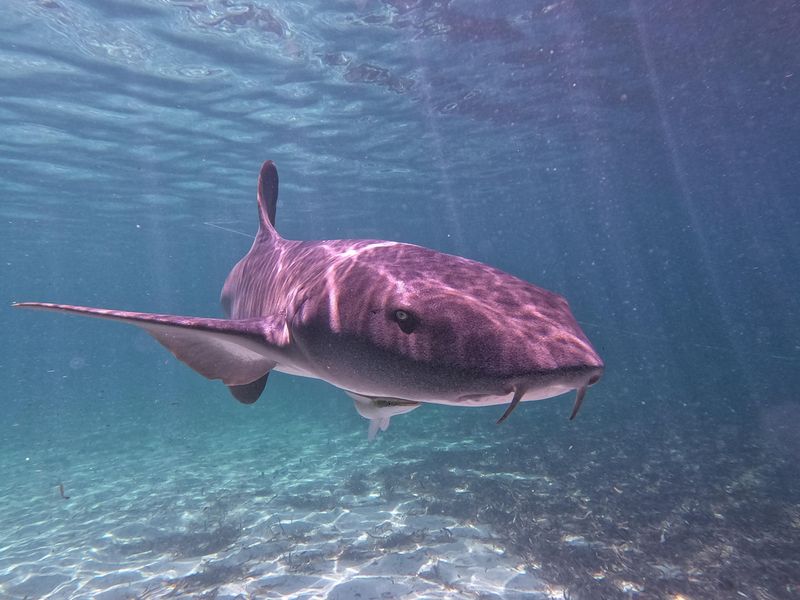
Often found resting on the ocean floor, nurse sharks are known for their docile nature. These bottom-dwellers are nocturnal hunters, feeding on small fish and invertebrates.
Their slow movements make them appear almost lazy. During the day, they are often spotted resting in groups, showcasing their social side.
Nurse sharks’ lack of aggression towards humans makes them a popular attraction for divers. Their peaceful nature allows for close encounters, offering a safe and intimate wildlife experience.
They represent the tranquility found beneath the waves, challenging the notion of sharks as fearsome predators.
Angel Shark
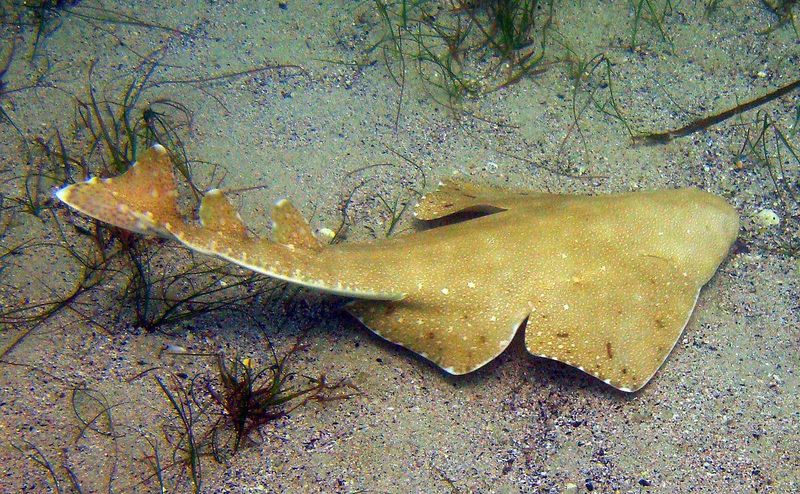
With a body resembling a stingray, angel sharks are masters of disguise. They lie hidden in the sand, waiting to ambush small prey.
Despite their predatory tactics, they are not dangerous to humans. Their ability to blend into the seafloor is remarkable, offering a glimpse into the adaptability of marine life.
While encounters are rare, those who spot an angel shark are treated to a unique spectacle. They exemplify nature’s ability to combine stealth with beauty.
Angel sharks surprise with their gentle behavior and remarkable camouflage, providing a unique perspective on the diversity of sharks.
Leopard Shark
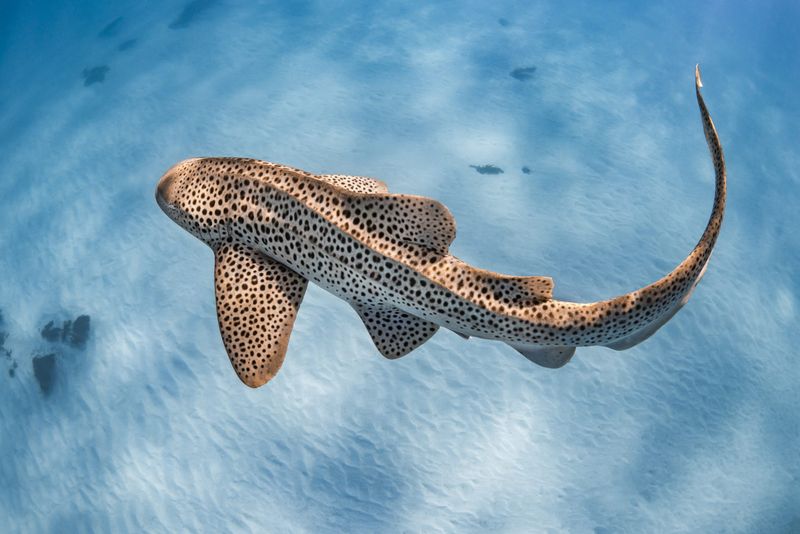
Easily recognized by their striking spots, leopard sharks are common in shallow water habitats. They utilize their impressive senses to hunt for crustaceans and small fish.
Their preference for shallow waters makes them accessible to snorkelers. Leopard sharks are curious but not aggressive, often seen swimming along the ocean floor.
Their calm nature allows for close observation, making them popular with underwater photographers. They embody elegance and tranquility in their natural environment.
Observing a leopard shark is an opportunity to witness the grace of marine life up close, challenging traditional shark stereotypes.
Caribbean Reef Shark

The Caribbean Reef Shark is a common sight in the warm waters of the Caribbean Sea, known for its sleek appearance and graceful swimming style. They typically grow up to 10 feet in length and possess a distinctive, torpedo-shaped body that aids in quick maneuvers through coral reefs.
Despite their formidable size, Caribbean Reef Sharks are not considered a significant threat to humans. They are more curious than aggressive, often showing interest in divers without displaying hostile behavior.
Observing these sharks in their natural habitat can be an awe-inspiring experience.
Their diet primarily consists of fish and cephalopods, making them an integral part of the marine ecosystem. They help maintain the balance by preying on weak and sick individuals, contributing to the overall health of the reef environment.
Zebra Shark
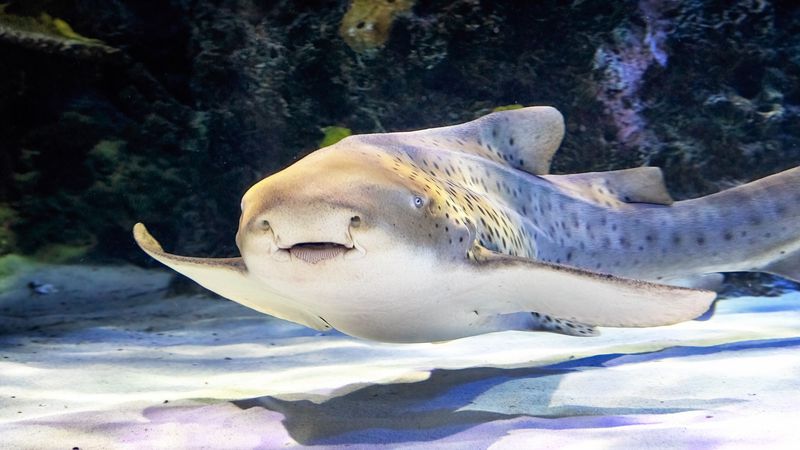
Zebra sharks, with their striped juvenile pattern, are a favorite among divers. As they mature, the stripes fade to spots, but their gentle nature remains unchanged.
These sharks are slow-moving and curious, often resting on the ocean floor. They feed on mollusks and crustaceans, posing no threat to humans.
Their approachable demeanor allows for close interactions, making them a highlight of many diving experiences. Zebra sharks offer a glimpse into the gentler side of the ocean, inviting admiration rather than fear.
Their calm presence is a testament to the peaceful nature of many shark species.
Port Jackson Shark
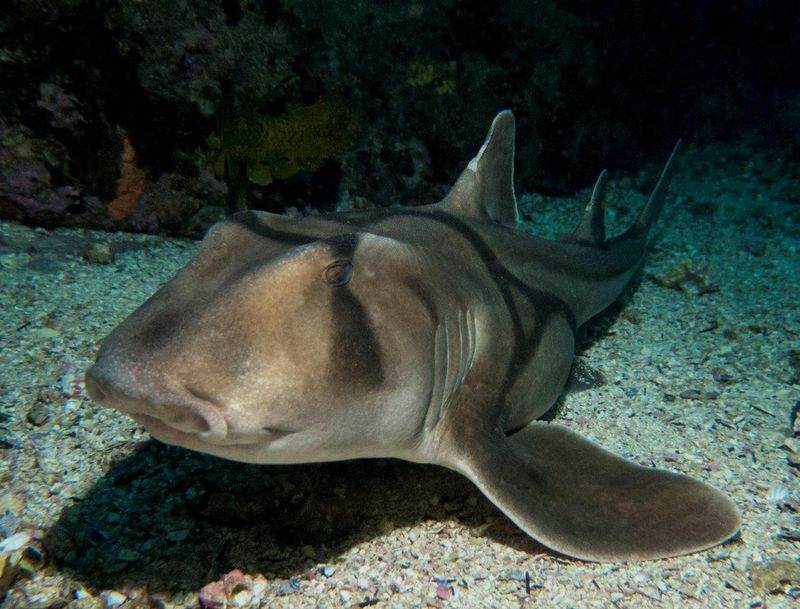
Port Jackson sharks are easily identified by their unique markings and egg-shaped bodies. They prefer the rocky shorelines, where they feed on sea urchins and mollusks.
These sharks are nocturnal and generally avoid human interaction. Their harmless nature makes them a fascinating subject for study.
They exhibit a blend of caution and curiosity, often observed during night dives. Port Jackson sharks are a reminder that not all sharks are aggressive hunters.
Their peaceful nature and unique appearance challenge the typical image of a shark, offering a more nuanced understanding of marine life.
Thresher Shark
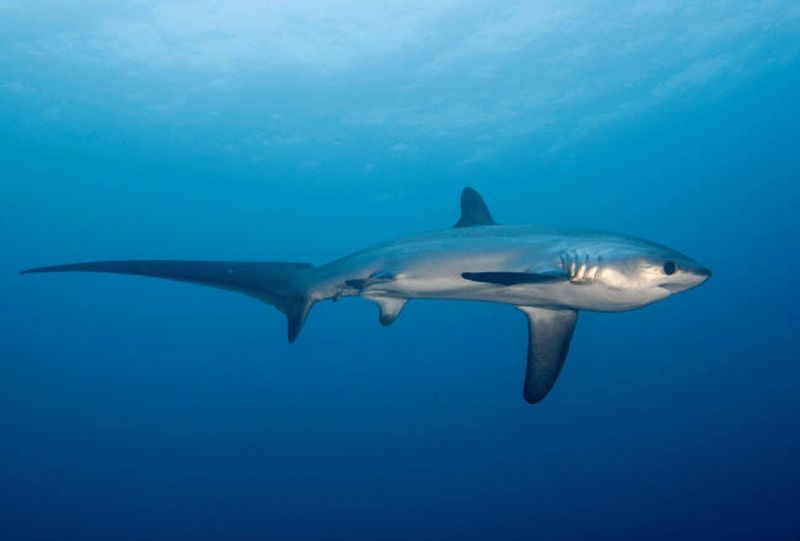
Famous for their long, whip-like tails, thresher sharks use them to stun prey. Despite their hunting prowess, they are not aggressive towards humans.
Thresher sharks are often seen breaching the water’s surface, showcasing their acrobatic skills. Their sleek bodies and powerful tails make them a spectacle in the open ocean.
Observers are often captivated by their movements, which are both graceful and formidable. Thresher sharks represent the balance of power and elegance in marine life.
Their presence is a reminder of the complexity and wonder found in ocean ecosystems.
Horn Shark
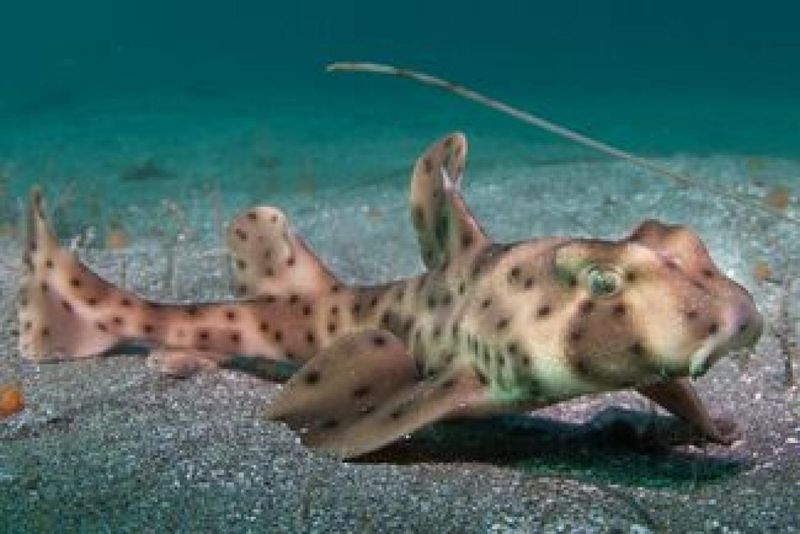
Horn sharks are small, bottom-dwelling creatures, known for their distinctive horn-like ridges. They prefer rocky, kelp-filled waters where they hunt for crustaceans and mollusks.
Despite their menacing appearance, they are harmless to humans. Their slow and deliberate movements make them a delight for underwater observers.
They often remain hidden during the day, becoming more active at night. Horn sharks exemplify the diversity of shark species, with their unique adaptations and gentle nature.
They offer a fascinating glimpse into the lesser-known side of the shark world, challenging perceptions with their calm demeanor.
Goblin Shark
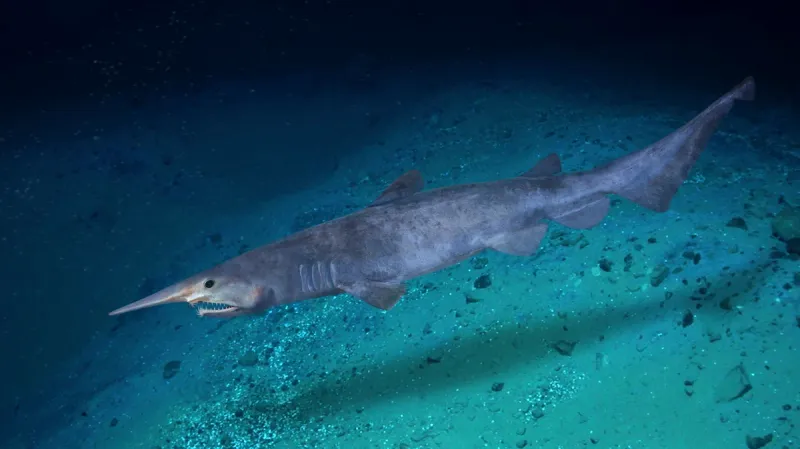
Goblin sharks, inhabiting the deep sea, are rarely seen by humans. These elusive creatures have a distinctive elongated snout and a jaw that protrudes to catch prey.
While their appearance might seem fearsome, they pose no threat to humans. Observations of goblin sharks are limited, adding to their mysterious allure.
They are a reminder of the ocean’s vast and unexplored depths. Goblin sharks challenge our understanding of shark behavior with their unique adaptations.
Their presence invites curiosity about the hidden wonders of the deep sea, showcasing the diversity of life beneath the waves.
Blue Shark
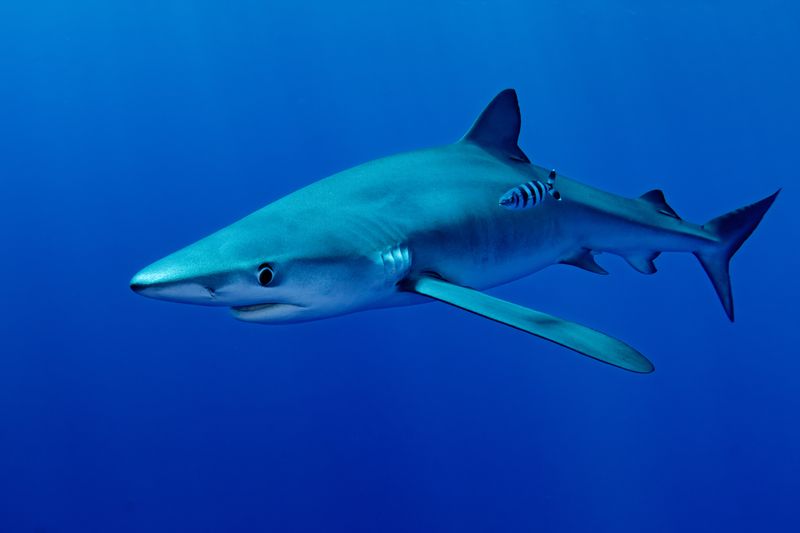
Blue sharks are known for their striking appearance and inquisitive nature. They inhabit the open ocean, often seen in schools.
These sharks are fast swimmers, yet their interactions with humans are generally non-aggressive. Blue sharks are curious, often approaching divers out of interest rather than aggression.
Their sleek bodies and vibrant coloration make them a favorite among photographers. Observing a blue shark is witnessing grace and agility in motion.
They offer an example of how sharks can be both beautiful and benign, adding to the rich tapestry of marine life.
Sand Tiger Shark
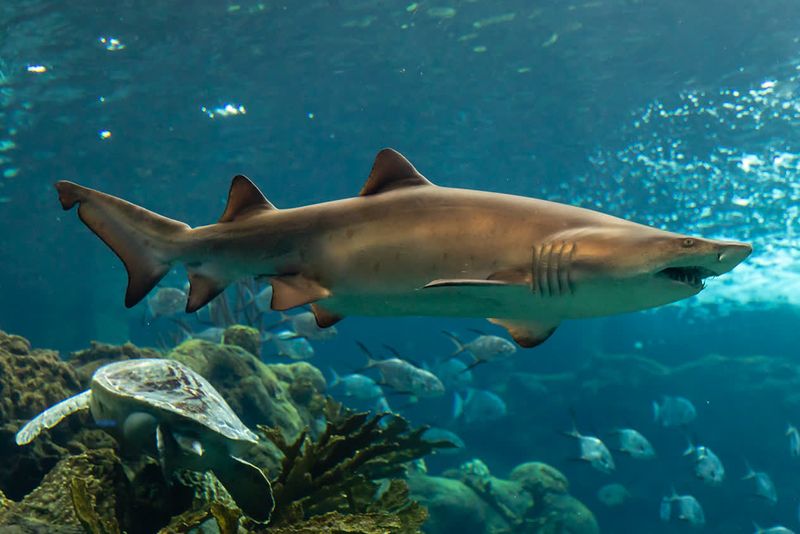
Despite their fierce appearance, sand tiger sharks are surprisingly docile. They are often found near shipwrecks and reefs, where they hunt for fish.
Their slow movements and preference for staying close to the seabed give them a relaxed demeanor. Sand tiger sharks are known to coexist peacefully with divers.
Their intimidating look contrasts sharply with their non-aggressive behavior. Sand tiger sharks exemplify the complexity of nature, challenging perceptions with their gentle interactions.
They serve as a reminder that appearances can be deceiving, offering a more nuanced view of shark behavior.
Spotted Wobbegong
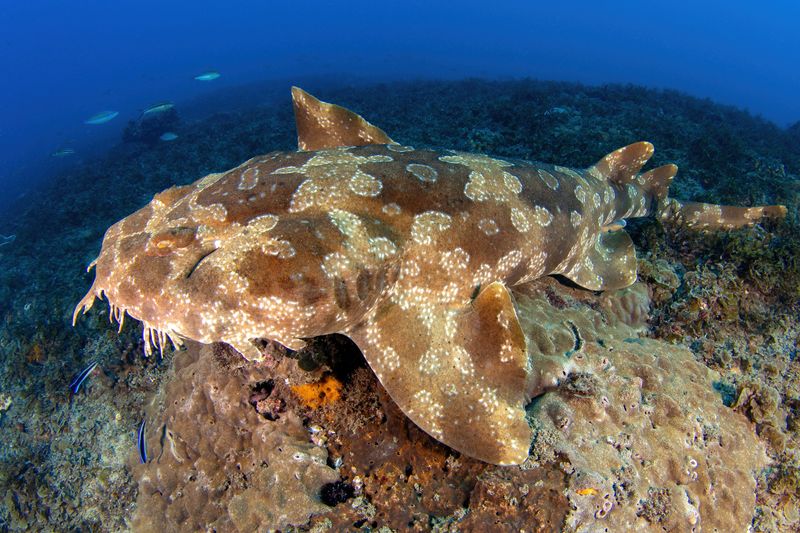
This species of wobbegong is known for its beautifully patterned skin, which acts as camouflage in coral environments. They spend much of their time resting, waiting to ambush prey.
Despite their predatory nature, they are not dangerous to humans. Spotted wobbegongs are a favorite among underwater photographers for their unique appearance.
Their ability to hide in plain sight speaks to the adaptability of marine species. They challenge the perception of sharks as active hunters, offering a glimpse into the quiet side of ocean life.
Spotted wobbegongs highlight the beauty and diversity of marine ecosystems.
Blacktip Reef Shark
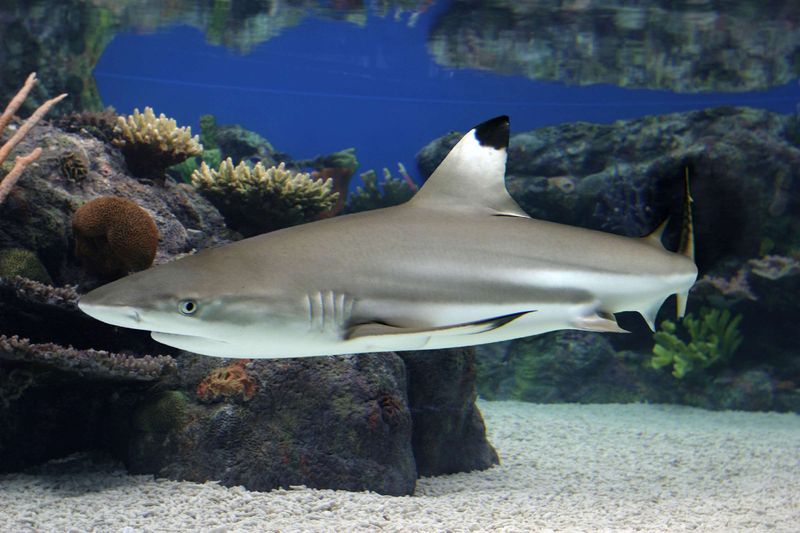
Common in coral reef environments, blacktip reef sharks are known for their distinctive black-tipped fins. They are often seen patrolling the shallow waters of reefs, showcasing their impressive hunting skills.
Despite their active nature, they pose little threat to humans. Blacktip reef sharks are curious and often seen by snorkelers and divers.
Their sleek movements and striking appearance make them a captivating sight. They exemplify the balance of predator and peacekeeper within marine habitats.
Observing a blacktip reef shark is witnessing the harmonious existence of life in coral ecosystems.
Epaulette Shark
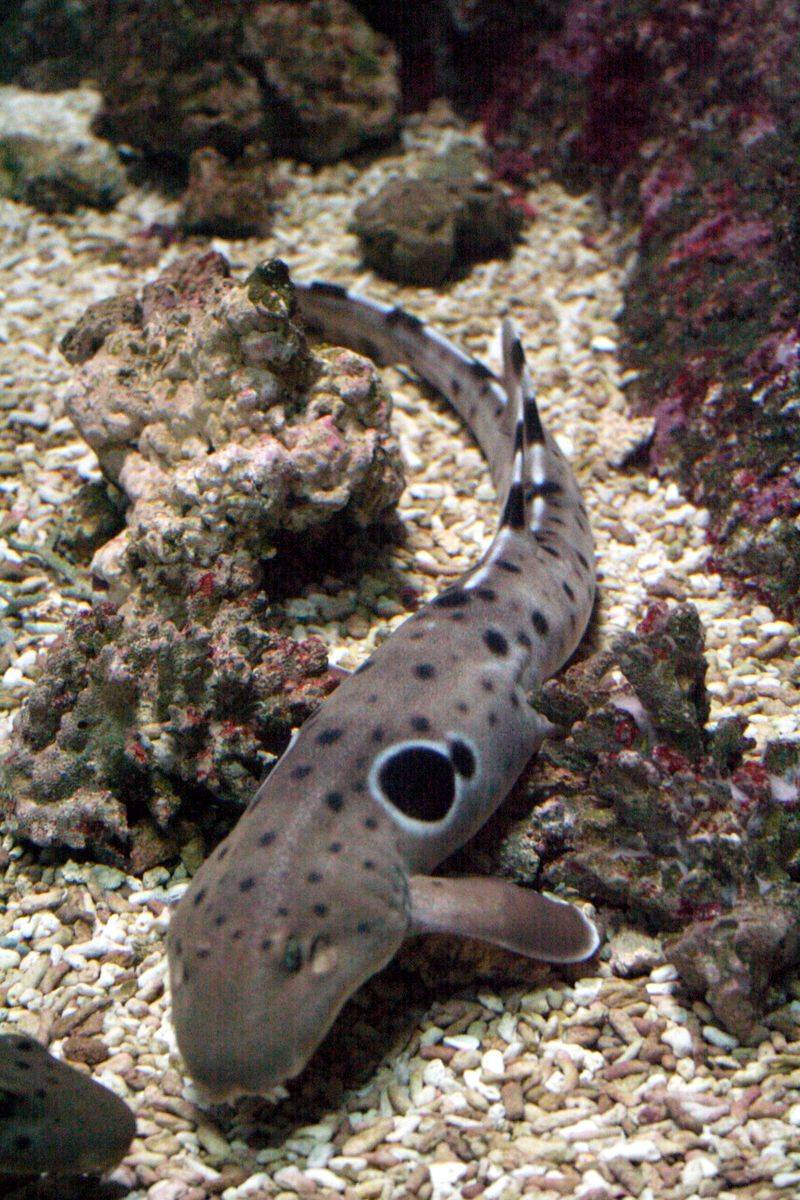
Epaulette sharks are small, nocturnal hunters with a unique ability to ‘walk’ on land using their fins. They inhabit shallow, rocky reefs and feed on small fish and invertebrates.
Their behavior is more akin to a salamander than a traditional shark. Epaulette sharks are non-aggressive and rarely pose any threat to humans.
Their ability to move between rock pools is a fascinating adaptation. These sharks offer a unique glimpse into the evolutionary possibilities within marine life.
Epaulette sharks embody the harmonious blend of curiosity and adaptation, challenging conventional views of shark behavior.

